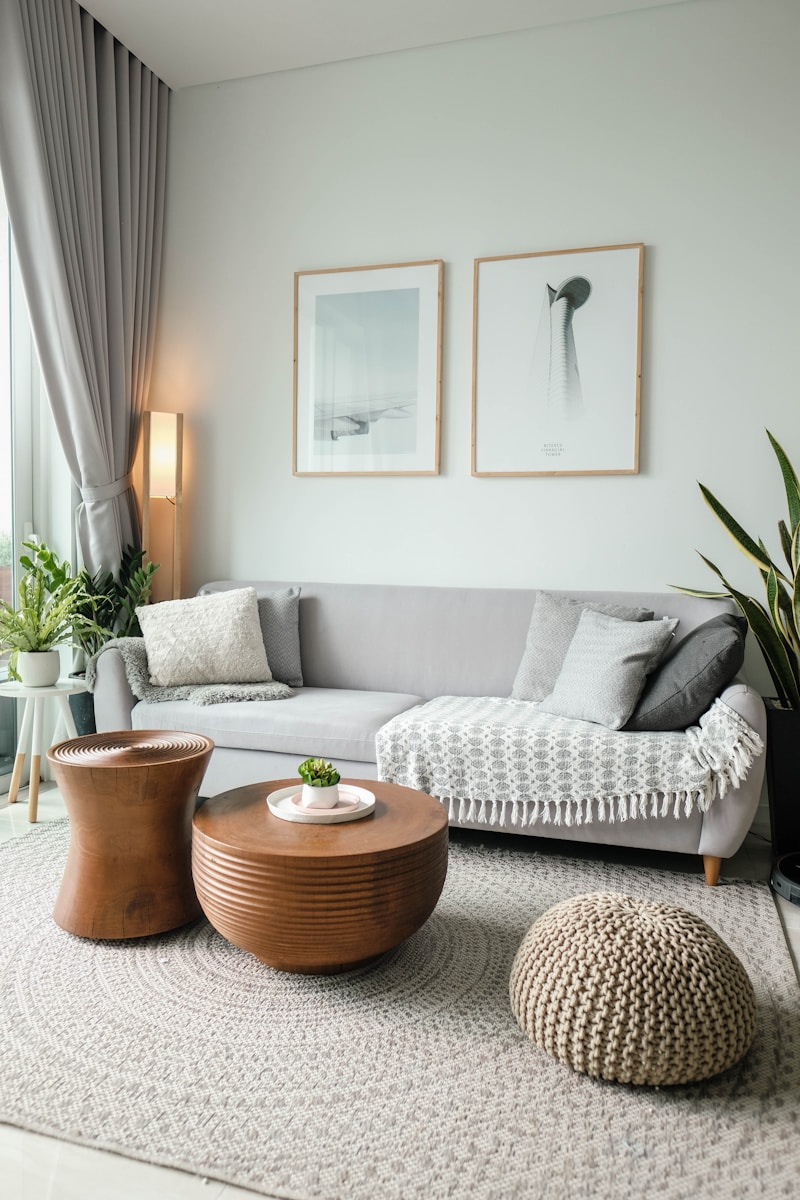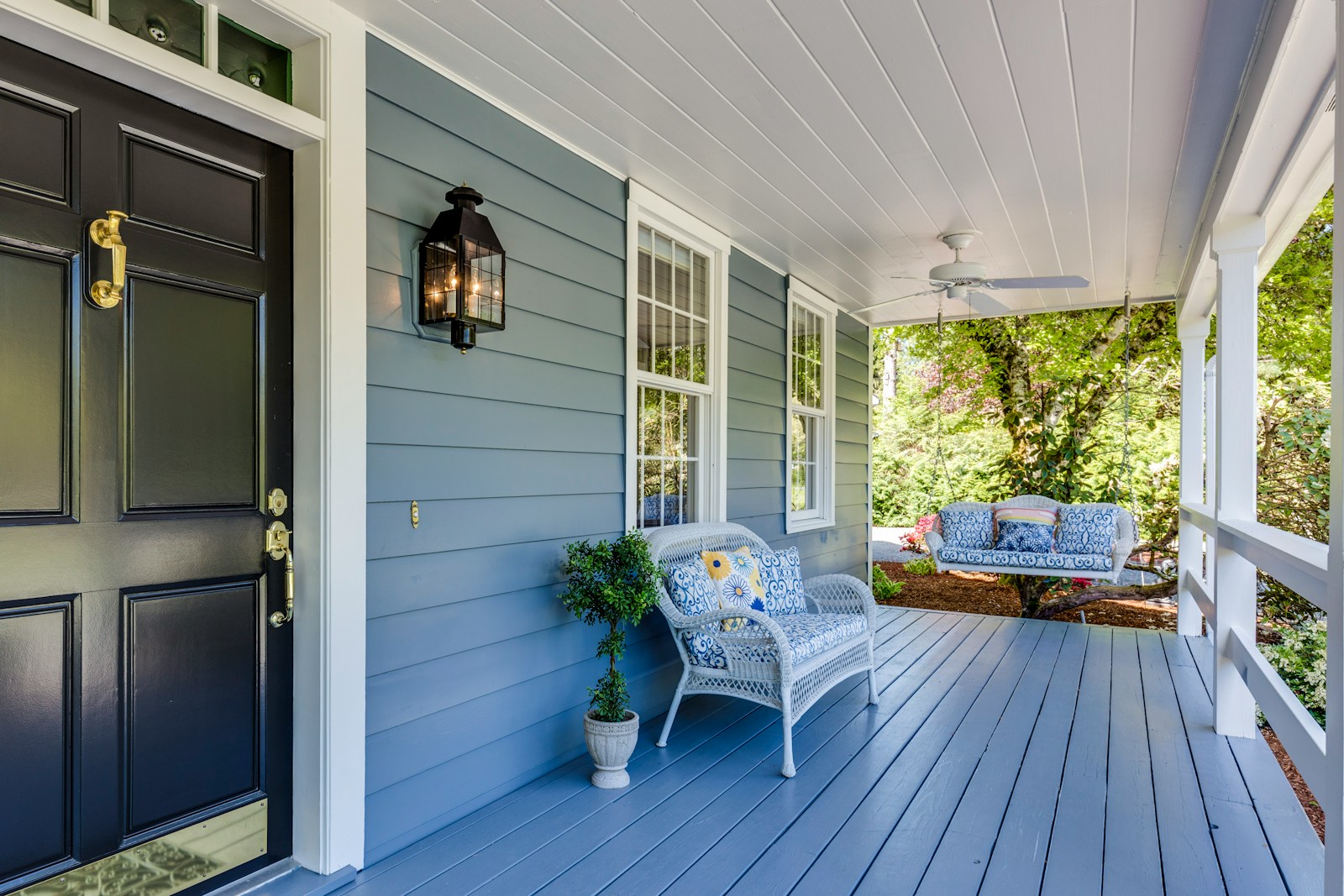Design Tricks to Make Small Rooms Feel Bigger
Use Light Colors to Open Up the Space
One of the easiest design tricks to make small rooms feel bigger is to use light colors for walls, ceilings, and furniture. Lighter shades, such as whites, pastels, or light grays, create a sense of openness and reflect more light, making the room feel airy and expansive.
While darker colors can make a room feel cozy, they can also make small spaces feel cramped. Instead, opt for light, neutral tones for the walls and incorporate pops of color through accessories like throw pillows, rugs, or artwork. This creates a balanced and inviting atmosphere without overwhelming the space.
Incorporate Mirrors to Create Depth
Mirrors are a powerful tool for creating the illusion of space. When placed strategically, mirrors can reflect light and open up the room, making it feel larger and brighter. Consider placing a large mirror on one wall or using multiple smaller mirrors throughout the room to create a sense of depth and dimension.
Mirrors also work well in narrow spaces like hallways, as they visually expand the area. Be sure to choose mirrors with stylish frames that complement your decor style for both functionality and aesthetic appeal.
Opt for Furniture That Enhances Space
Choosing the right furniture is crucial when trying to make small rooms feel bigger. Opt for pieces that are sleek, minimalistic, and scaled to the size of the room. Avoid bulky furniture that can crowd the space and make it feel congested. Instead, go for multi-functional furniture, such as a sofa bed, fold-out tables, or storage ottomans that combine practicality with space-saving design.
Additionally, select furniture with legs or open bases that allow light to flow through the space. This creates an airy feel by leaving the floor visible, which enhances the room’s sense of openness.
Maximize Vertical Space with Tall Furniture
When you’re dealing with limited square footage, look up! Maximizing vertical space is one of the best design tricks to make small rooms feel bigger. Tall furniture like bookshelves, cabinets, or storage units that reach up to the ceiling draw the eye upward, creating the illusion of height and making the room feel more expansive.
Vertical storage also helps to keep the floor clear, giving the room a more open and organized appearance. Consider using tall shelving units, hanging plants, or vertical wall-mounted racks to make the most of your wall space and avoid cluttering the floor.
Use Light Curtains or Blinds for an Open Look
Heavy drapes can make a room feel closed off and smaller. Instead, opt for light, airy curtains or blinds that allow natural light to flood the space. Sheer or lightweight fabric curtains in neutral colors allow light to pass through, brightening up the room and making it feel more open.
If privacy is a concern, consider using layered curtains or blinds that can be adjusted based on the time of day. Additionally, mounting curtains closer to the ceiling or using floor-to-ceiling drapery can create the illusion of height and add elegance to the room.
Keep Furniture Arrangement Simple and Open
One of the most effective design tricks to make small rooms feel bigger is to keep the furniture arrangement open and uncomplicated. Avoid overcrowding the room with too many pieces of furniture. Instead, focus on the essentials and arrange them to promote flow and openness.
In living rooms or bedrooms, try pulling furniture away from walls to create a sense of space. Use rugs to define seating areas, and ensure there’s enough room for easy movement throughout the room. By keeping the layout simple and spacious, you’ll instantly enhance the feeling of openness in a small room.
Use Multi-Purpose Furniture
Multi-purpose furniture is a must-have for maximizing space in small rooms. Items like sofa beds, folding desks, and storage coffee tables serve more than one function, reducing the need for additional furniture and freeing up precious floor space.
Investing in pieces that serve dual purposes, such as a dining table that doubles as a work desk or ottomans that provide both seating and storage, can help keep your small room tidy and functional. These furniture solutions enhance the versatility of your space without overwhelming it.
Choose Light Flooring to Enhance the Feeling of Space
The type of flooring you choose can have a significant impact on how a room feels. Light-colored floors, such as natural wood, light tile, or soft-hued carpets, can help make small rooms feel brighter and more expansive. Lighter flooring reflects light, giving the room a more open and airy feel.
Dark flooring can create a sense of heaviness and make the space feel more enclosed. By choosing light flooring, you help visually expand the room, allowing it to feel more open, even if the actual space is limited.
Use Stripes and Vertical Patterns to Create Height
Stripes and vertical patterns are another clever design trick to make small rooms feel bigger. Vertical stripes, whether on wallpaper, curtains, or furniture, draw the eye upward and give the illusion of a taller ceiling, adding a sense of height to the room.
Incorporating striped elements can make a room feel more expansive without taking up any additional space. Opt for subtle stripes in neutral or soft tones for a modern, stylish effect that doesn’t overwhelm the room, or go for bolder patterns for a more striking impact.
Incorporate Open Shelving to Keep Things Accessible
Open shelving is an effective way to store and display items without making a room feel crowded or cramped. Unlike traditional closed cabinets, open shelves keep everything visible and easily accessible, creating a sense of openness and organization in the room.
Use open shelves in the kitchen, living room, or bathroom to display books, decor, or everyday items. Keep the shelves neat and curated to avoid clutter, and choose shelving units that are minimalist and light in design to maintain a sense of space. Open shelving works especially well in kitchens or bathrooms, where you can store and display essentials without taking up additional space.
Choose Furniture with Light, Reflective Materials
To enhance the feeling of space in a small room, choose furniture made from light, reflective materials like glass, acrylic, or metal. Glass tables, acrylic chairs, and mirrored furniture reflect light, making the room feel brighter and larger. These materials help to create an open, airy atmosphere while adding a touch of sophistication to the decor.
Avoid heavy, bulky furniture that can overwhelm the space. Instead, go for sleek designs with materials that allow light to pass through, making your room feel more expansive and less cluttered.
Keep Windows Unobstructed for Natural Light
Natural light can make a world of difference when trying to make small rooms feel bigger. Keep your windows unobstructed by heavy drapes or furniture. Use light, sheer curtains or blinds that allow plenty of daylight to fill the room.
Maximize natural light by choosing light-colored window treatments and keeping window areas clear. If privacy is a concern, consider using frosted glass or translucent window coverings that let light in while still offering some seclusion. The more natural light you let in, the more spacious your room will feel.
Use Modular Furniture to Customize the Space
Modular furniture is a flexible and adaptable solution for small rooms. These pieces can be rearranged to fit your space, allowing you to create a layout that works for your needs. Whether you need a sectional sofa that can be reconfigured or a modular bookshelf that expands or contracts, modular furniture can be customized to maximize the space you have.
Opt for modular furniture that fits your room’s specific dimensions and layout. These pieces can evolve with your changing needs and adapt to different activities, making them a great investment for maximizing both functionality and style in small rooms.
Use Light, Open Rugs to Define Areas Without Overcrowding
Area rugs are excellent for defining different areas within a small room, but choosing the right rug is key. Opt for light, neutral-colored rugs with subtle patterns or textures to avoid overwhelming the space. Open, airy rugs give the room a sense of flow and prevent it from feeling boxed in.
Large rugs can also create the illusion of more space by drawing the eye outward, making the room appear more expansive. Use rugs to define zones, such as a seating area or workspace, while maintaining a cohesive and open feel.
Declutter and Keep Essentials Visible
Clutter can make even the largest of rooms feel cramped and disorganized. One of the most effective tricks to make small rooms feel bigger is to declutter regularly and keep only the essentials visible. Storage solutions like baskets, bins, and trays can help corral your items without taking up too much space.
Make sure that everything has its place and avoid overcrowding shelves, tables, or countertops. A clean, tidy room instantly feels more spacious and allows the design elements, such as furniture and decor, to shine without distraction.
Frequently Asked Questions
What colors make a small room feel bigger?
Light colors such as whites, soft neutrals, and pastels are the best choices for making a small room feel bigger. These colors reflect light and create an airy, open atmosphere. Bright whites, light grays, and pale blues or greens give the illusion of space and height. While dark colors can make a room feel cozy, they tend to absorb light and can make small spaces appear even more cramped. Consider using light-colored walls and furniture, while adding accents or textures through decor to avoid a sterile look.
How can I create more space in a small room without remodeling?
Creating space in a small room doesn’t require a major remodel. You can use design tricks like using mirrors to reflect light, choosing multi-functional furniture, and maximizing vertical space with tall shelves or cabinets. Keep the furniture layout simple and open to avoid overcrowding, and use light colors for walls and decor. Keep only the essentials visible and declutter regularly to maintain an open, airy feel. These strategies can instantly make a room feel larger without needing a major overhaul.
Can I use dark colors in a small room?
While dark colors can make a room feel cozy and intimate, they can also make a small room feel even more cramped. If you love dark tones, you can still incorporate them strategically. Consider using dark colors on accent walls or in decor elements like cushions, curtains, or rugs. To balance this, pair dark hues with light-colored furniture, ceilings, and walls to maintain a sense of openness. Use mirrors or reflective surfaces to bounce light and prevent the room from feeling too enclosed.
What type of furniture works best for small rooms?
For small rooms, choose furniture that is compact, multi-functional, and lightweight. Opt for pieces like sofas that can convert into beds, storage ottomans, or fold-out tables. Furniture with exposed legs or open bases allows light to flow through, making the space appear larger. Avoid oversized, heavy furniture that can make the room feel crowded. Choose minimalist designs that maximize functionality while maintaining a sleek, airy look. Modular furniture is another great choice for small spaces, as it can be customized to fit your layout.
How do I maximize natural light in a small room?
Maximizing natural light is one of the most effective ways to make a small room feel bigger. Keep windows unobstructed by heavy curtains or large furniture, and opt for sheer or light-colored window treatments that allow sunlight to pass through. Consider using reflective surfaces, such as mirrors or glass furniture, to bounce light around the room. If privacy is a concern, use frosted glass or adjustable blinds that can still let light in. The more natural light you can bring into a space, the more expansive and open it will feel.
© 2025 GardeningandDecor.com. All rights reserved.


